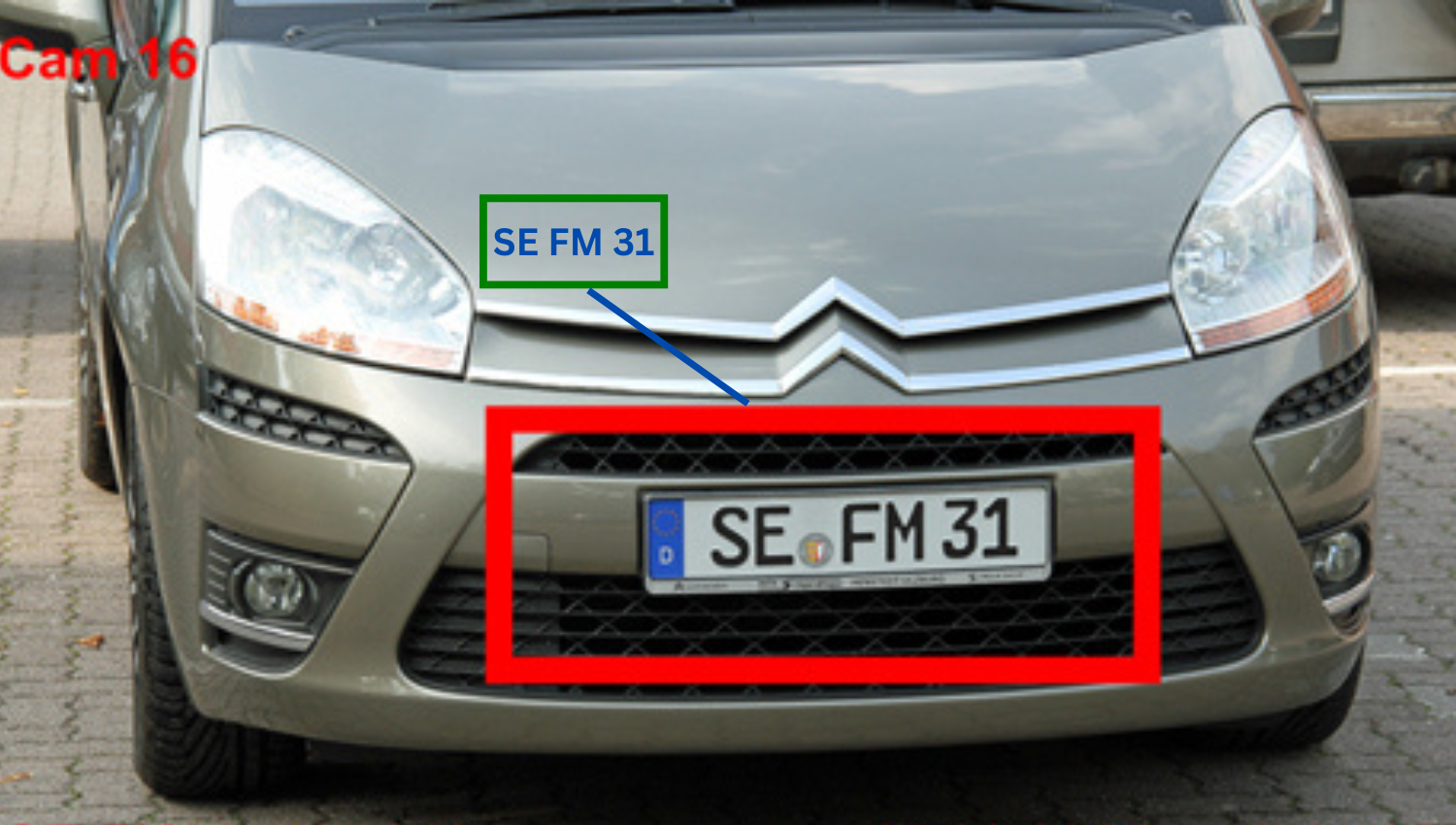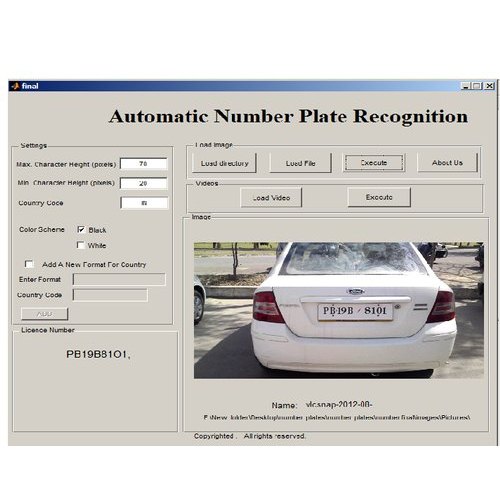Automated License Plate Scanners: A New Strategy That Beats Antiquated Traditional Methods
In the ever-evolving landscape of technology, law enforcement and security systems have seen significant advancements. Among these is the advent of Automated License Plate Scanners (ALPR), which promise to revolutionize the way vehicles are monitored and tracked. In this article, we will delve into the comparison between Automated License Plate Scanners and traditional methods, examining the strengths and weaknesses of each and understanding how they are transforming public safety and security.
Table of Contents
The Rise of Automated License Plate Scanners
Automated License Plate Scanners, or Automatic Number Plate Recognition (ANPR) systems, utilize advanced camera technology and software to read vehicle license plates. These systems can be mounted on patrol cars, at fixed locations like traffic lights, or integrated into security infrastructure. The primary components of an ALPR system include high-resolution cameras, optical character recognition (OCR) software, and a database for storing and cross-referencing captured data.

Traditional Methods of License Plate Monitoring
Before the advent of ALPR technology, law enforcement relied on traditional methods to monitor and track vehicles. These methods included:
- Manual Observation: Officers would manually observe and record license plate numbers, often using binoculars or stationary checkpoints.
- Static Checkpoints: Checkpoints were set up at strategic locations where officers would manually check each vehicle’s registration and license plate.
- Speed Traps: Radar and lidar were used to detect speeding vehicles, with officers then manually recording the license plates of offenders.
- Surveillance Cameras: Traditional surveillance cameras record video footage, which requires manual review to identify license plates.
While these methods were effective to a certain extent, they had significant limitations in terms of speed, accuracy, and resource allocation.
Efficiency and Accuracy
One of the most significant advantages of automated license plate scanners is their efficiency. ALPR cameras can capture and process thousands of license plates per hour with a high degree of accuracy. Traditional methods, by contrast, are labor-intensive and prone to human error. Manual recording of license plates is time-consuming and subject to mistakes due to poor visibility, fast-moving vehicles, and officer fatigue.
Real-Time Data and Rapid Response
ALPR systems provide real-time data, enabling law enforcement to respond swiftly to potential threats. For instance, if a stolen vehicle passes an ALPR-equipped checkpoint, the system can instantly alert nearby officers, who can then take immediate action. Traditional methods lack this immediacy; by the time an officer manually identifies a suspicious vehicle, it might already be too late to respond effectively.
Coverage and Reach
Automated license plate scanners offer extensive coverage and reach. They can be deployed across a city or region, covering multiple entry and exit points, highways, and urban areas. This wide coverage ensures that vehicles of interest are more likely to be detected. Traditional methods, on the other hand, are limited by the number of officers available and the physical locations where they can be stationed.
Data Integration and Analysis
One of the key strengths of ALPR technology is its ability to integrate with other data systems. ALPR cameras can feed data into central databases, allowing for cross-referencing with stolen vehicle reports, outstanding warrants, and other law enforcement databases. This integration enhances the ability to identify and apprehend suspects. Traditional methods do not offer this level of data integration and require manual cross-referencing, which is both time-consuming and inefficient.
Privacy Concerns and Ethical Considerations
Despite the numerous advantages of automated license plate scanners, they are not without controversy. Privacy advocates have raised concerns about the potential for misuse of ALPR data, arguing that constant surveillance can lead to a violation of individual privacy rights. The collection and storage of license plate data over extended periods can create comprehensive records of individuals’ movements, which could be misused if not properly regulated.
Traditional methods, while less efficient, do not raise the same level of privacy concerns because they do not involve continuous, automated data collection. The human element in traditional methods acts as a natural check against constant surveillance.

Cost and Resource Allocation
Implementing ALPR systems involves a significant initial investment in hardware, software, and infrastructure. However, once deployed, these systems can operate with minimal human intervention, leading to long-term cost savings. Traditional methods require ongoing allocation of human resources, which can be more costly in the long run due to the need for continuous officer presence and the potential for overtime pay.
Legal and Regulatory Framework
Automated license plate scanners are subject to various legal and regulatory considerations. Different jurisdictions have different laws regarding the collection, storage, and use of ALPR data. Ensuring compliance with these laws is crucial to avoid legal challenges and maintain public trust. Traditional methods, being less reliant on data collection, are generally less encumbered by such regulations.
Case Studies and Real-world Applications
To better understand the impact of ALPR technology, let’s look at a few real-world applications:
- Law Enforcement: Many police departments across the United States and Europe have adopted ALPR technology to enhance their patrol operations. For instance, the Los Angeles Police Department (LAPD) uses ALPR cameras to monitor high-crime areas, resulting in increased vehicle recovery rates and more efficient deployment of officers.
- Toll Collection: ALPR systems are widely used in toll collection on highways and bridges. These systems streamline the toll collection process, reducing congestion and improving traffic flow. The E-ZPass system in the northeastern United States is a prime example of ALPR technology in action.
- Parking Management: Cities and private parking operators use ALPR cameras to enforce parking regulations and manage parking facilities. In San Francisco, ALPR technology helps ensure compliance with parking rules, reducing the number of violations and improving overall parking efficiency.
- Border Security: Countries like the United States and Canada use ALPR systems at border crossings to monitor and record vehicle movements. This technology helps border security agencies identify and track suspicious vehicles, enhancing national security.

Future Trends and Innovations
The future of automated license plate scanners looks promising, with ongoing advancements in technology. Some trends to watch include:
- Enhanced AI and Machine Learning: ALPR systems will increasingly leverage AI and machine learning to improve accuracy and predictive capabilities. These technologies can help identify patterns and anomalies in vehicle movements, aiding in crime prevention and investigation.
- Integration with Smart City Initiatives: As cities adopt smart city technologies, ALPR systems will play a crucial role in managing traffic, enhancing public safety, and improving urban mobility. Integration with other smart city infrastructure, such as traffic lights and public transportation systems, will create more cohesive and efficient urban environments.
- Improved Data Security and Privacy Measures: Addressing privacy concerns will be a key focus for the future development of ALPR technology. Implementing robust data security measures and clear regulatory frameworks will help balance the benefits of ALPR systems with the need to protect individual privacy.
Conclusion
In comparing Automated License Plate Scanners with traditional methods of license plate monitoring, it is clear that ALPR technology offers significant advantages in terms of efficiency, accuracy, and coverage. While traditional methods have their place, particularly in situations where privacy concerns are paramount, the benefits of ALPR systems in enhancing public safety and security are undeniable.
As technology continues to evolve, the integration of automated license plate scanners into broader security and urban management systems will likely become more prevalent. By addressing privacy concerns and ensuring proper regulatory oversight, ALPR technology can continue to provide valuable benefits to law enforcement, government agencies, and the public.
The transition from traditional methods to advanced ALPR systems represents a significant step forward in the ongoing effort to create safer, more efficient communities. Whether through enhanced law enforcement capabilities, streamlined toll collection, or improved parking management, the impact of automated license plate scanners is poised to grow in the years to come.

